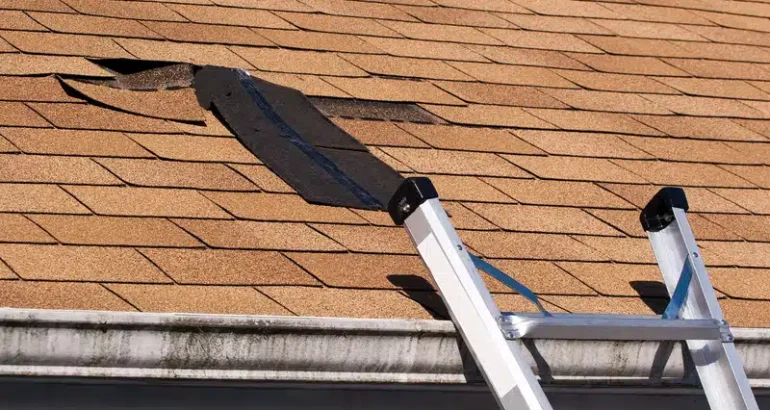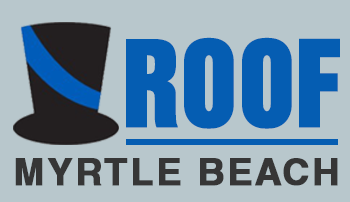
Your roof is one of the most critical components of your home, shielding it from the elements and maintaining structural integrity. Proper roof maintenance is essential for extending its lifespan and avoiding costly repairs.
Understanding the Importance of Roof Maintenance
1. Protecting Your Investment
Regular roof maintenance is crucial for protecting your investment. A well-maintained roof ensures that your home remains safe and dry, avoiding the need for costly repairs or replacements.
- Preventing Leaks: Routine maintenance helps prevent leaks, which can lead to water damage and mold growth.
- Maintaining Value: A well-kept roof preserves your home’s value, making it more attractive to potential buyers.
2. Enhancing Energy Efficiency
A well-maintained roof can also contribute to your home’s energy efficiency. Proper insulation and ventilation help regulate indoor temperatures, reducing your energy bills.
- Insulation: Good insulation prevents heat loss in the winter and keeps your home cool in the summer.
- Ventilation: Proper ventilation helps to regulate temperature and moisture levels in your attic, improving overall energy efficiency.
3. Extending Roof Lifespan
Regular maintenance can significantly extend the lifespan of your roof. By addressing minor issues before they become major problems, you can ensure that your roof remains functional and durable for many years.
- Early Detection: Routine inspections help detect issues early, preventing them from escalating into costly repairs.
- Routine Care: Regular cleaning and maintenance keep your roof in optimal condition, extending its lifespan.
Essential Roof Maintenance Tips
1. Regular Inspections
Conducting regular roof inspections is essential for identifying and addressing issues before they become severe. Inspections should be performed at least twice a year, ideally in the spring and fall.
- Visual Inspection: Look for visible signs of damage such as missing or damaged shingles, cracked flashing, and sagging areas.
- Professional Inspection: Hire a professional roofing contractor for a thorough inspection to identify hidden problems.
2. Cleaning Gutters and Downspouts
Clogged gutters and downspouts can lead to water damage and roof leaks. Regularly cleaning and maintaining your gutters is essential for ensuring proper water flow.
- Remove Debris: Clear leaves, twigs, and other debris from gutters and downspouts to prevent blockages.
- Check for Leaks: Inspect gutters for leaks and ensure that they are securely attached to the roof.
3. Removing Debris from the Roof
Debris such as leaves, branches, and moss can accumulate on your roof, causing damage and hindering water flow.
- Safe Removal: Use a broom or a roof rake to gently remove debris. Avoid using harsh tools or walking on the roof if possible.
- Moss and Algae: Remove moss and algae growth with a suitable cleaner to prevent damage to shingles.
4. Inspecting and Repairing Flashing
Flashing is the material used to seal joints and transitions on your roof. Inspecting and repairing flashing is crucial for preventing leaks and water infiltration.
- Check for Damage: Inspect flashing around chimneys, skylights, and vents for signs of damage or corrosion.
- Repair or Replace: Repair any damaged flashing or replace it as needed to maintain a watertight seal.
5. Maintaining Roof Ventilation
Proper roof ventilation is essential for regulating temperature and moisture levels in your attic. Ensure that your roof ventilation system is functioning correctly.
- Check Vents: Inspect roof vents and ensure that they are not blocked or damaged.
- Attic Inspection: Check the attic for proper ventilation and signs of moisture buildup.
6. Addressing Minor Repairs Promptly
Addressing minor repairs promptly can prevent them from becoming major issues. Fixing small problems early helps maintain the overall health of your roof.
- Shingle Repairs: Replace missing or damaged shingles as soon as possible to prevent leaks.
- Seal Cracks: Seal any small cracks or gaps in your roof to prevent water infiltration.
How Weather Affects Your Roof’s Lifespan
1. Sun Exposure
Prolonged exposure to UV rays can cause shingles to become brittle and lose their protective granules. This can accelerate the aging process of your roof.
- Granule Loss: UV rays can cause the granules on asphalt shingles to wear away, reducing their effectiveness.
- Brittleness: Excessive sun exposure can make shingles brittle and more prone to cracking.
2. Rain and Moisture
Frequent rain and moisture can lead to roof damage and deterioration. Proper maintenance is essential for preventing water damage and extending your roof’s lifespan.
- Water Damage: Persistent rain can lead to leaks, mold growth, and structural damage.
- Moss and Algae: Moist conditions can promote the growth of moss and algae, which can damage shingles and reduce their lifespan.
3. Wind and Storms
High winds and storms can cause physical damage to your roof, such as missing shingles and damaged flashing.
- Wind Damage: Strong winds can lift shingles, causing them to become dislodged or damaged.
- Storm Damage: Severe storms can bring debris that may damage your roof or cause leaks.
4. Temperature Fluctuations
Extreme temperature fluctuations can cause shingles to expand and contract, leading to potential damage over time.
- Thermal Cycling: Repeated expansion and contraction can cause shingles to crack or become loose.
- Freeze-Thaw Cycles: In colder climates, freeze-thaw cycles can lead to ice dam formation and roof damage.
Shingle Replacement in Myrtle Beach: Local Considerations
1. Humidity and Salt Air
Myrtle Beach’s high humidity and salt air can accelerate roof wear and tear. Choosing durable roofing materials and conducting regular maintenance is essential for extending the life of your roof.
- Corrosion Resistance: Opt for roofing materials that are resistant to corrosion and rust to withstand the local climate.
- Regular Inspections: Conduct more frequent inspections to address any issues caused by the humid and salty environment.
2. Hurricane Season
During hurricane season, your roof may be exposed to severe weather conditions. Proper preparation and maintenance can help protect your roof from hurricane damage.
- Reinforcement: Consider reinforcing your roof and securing any loose components before hurricane season.
- Post-Storm Inspection: After a hurricane, conduct a thorough inspection to assess any damage and address repairs promptly.
3. Local Building Codes
Ensure that any roof maintenance or replacement projects comply with local building codes and regulations in Myrtle Beach.
- Permits: Check if permits are required for roof maintenance or replacement and ensure compliance with local regulations.
- Code Compliance: Ensure that your roofing materials and installation meet local building codes and standards.
How to Know When It’s Time to Replace Your Roof
1. Age of the Roof
The age of your roof is a significant factor in determining whether it needs to be replaced. Most asphalt shingles have a lifespan of 15 to 30 years.
- Manufacturer’s Warranty: Check the manufacturer’s warranty to determine if your roof is still covered.
- End of Life: If your roof is approaching or exceeding its expected lifespan, it may be time to consider replacement.
2. Extent of Damage
If your roof has extensive damage or multiple issues, replacement may be more cost-effective than continuous repairs.
- Widespread Damage: If damage is widespread or involves multiple areas, replacement may be necessary.
- Frequent Repairs: If you find yourself frequently repairing your roof, it may be more economical to replace it.
3. Visible Signs of Deterioration
Visible signs of deterioration, such as significant granule loss, missing shingles, and severe leaks, indicate that replacement may be necessary.
- Granule Loss: Significant granule loss on asphalt shingles can reduce their effectiveness and indicate the need for replacement.
- Leaks and Stains: Persistent leaks and water stains are signs that your roof may no longer be providing adequate protection.
When to Replace Your Roof: Contact Us for More Details
If you’re unsure whether it’s time to replace your roof or need assistance with roof maintenance, Roof Myrtle Beach is here to help. Our team of experienced professionals can provide expert advice and guidance on maintaining and replacing your roof. For more details on roof replacement and maintenance, call us at 843-455-9044 or message us with your concerns. We are dedicated to ensuring that your roof remains in excellent condition and provides long-lasting protection for your home.


